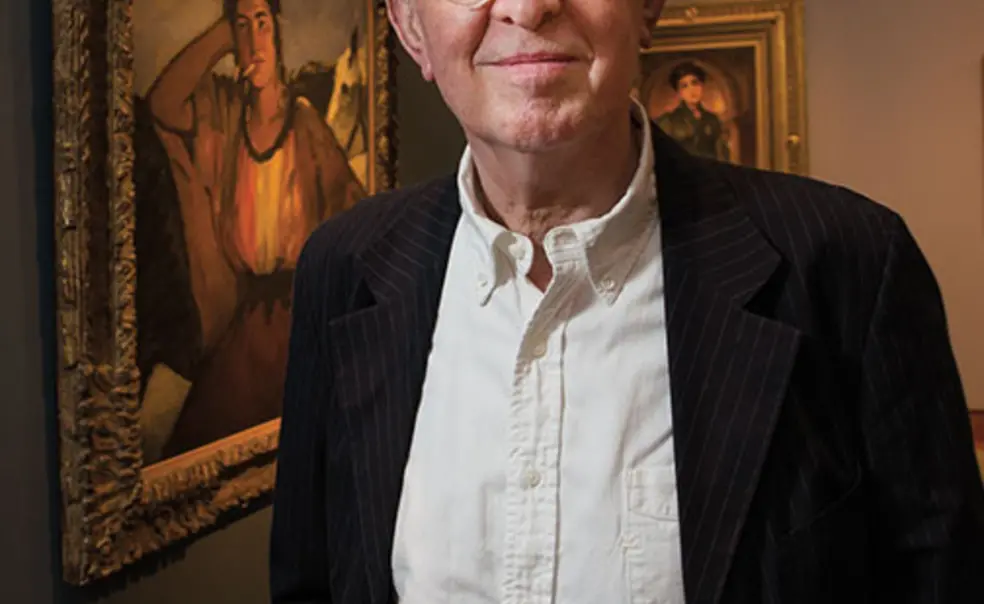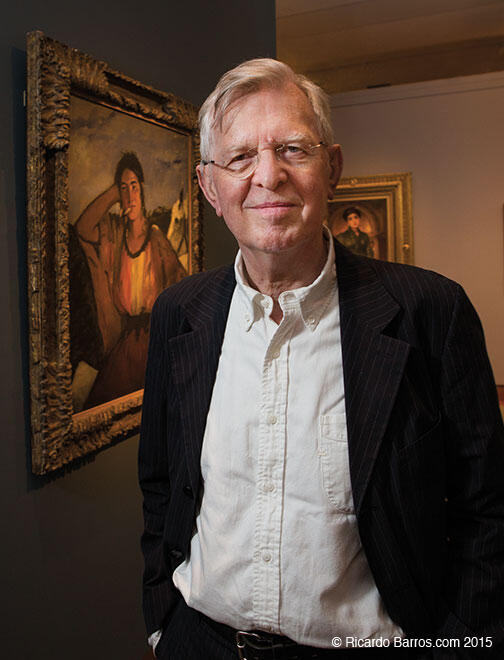Q&A: John Elderfield — Looking at Objects
New curator, a 30-year MoMA veteran, to focus on art of 19th, 20th centuries
“When I was 11, I inherited a stepfather who was an amateur landscape painter,” recalls John Elderfield. “So I went out painting with him.” Thus began a career in art and art history that included studies at the University of Leeds and a Ph.D. at the Courtauld Institute in London. Elderfield would spend the next 30 years at the Museum of Modern Art in New York, including as chief curator of painting and sculpture, presenting sweeping, deeply imagined shows on Mondrian, Matisse, Cézanne, and de Kooning that helped us understand those artists on a deeper level than ever before. In February he came to the Princeton University Art Museum in the newly established position of Allen R. Adler, Class of 1967, Distinguished Curator and Lecturer. This fall he is expected to teach a seminar on Cézanne.
What attracted you to the position here? Were you recruited to make specific changes?
The position was created because the museum and the donor of the position wanted to have somebody who would be an advocate for teaching 19th- and early 20th-century art and also to advocate an approach that is built out of looking at objects. I’d become aware during my time at MoMA that the number of people who work in this area was diminishing all the time.
What will be your approach to teaching undergraduates?
I’m name-dropping here: Kant said that artists don’t copy other artists to learn what they do, but to learn imaginative freedom. This is the thing that not only the visual arts teach, but literature and the humanities generally teach. I think there are life lessons about imaginative freedom, about being willing to enter situations where you don’t know where you’re going, about certain kinds of risk-taking — not risk-taking in the sense of being entrepreneurial, but in terms of understanding that you choose to work whatever discipline, whether it’s in the arts or outside of them. What artists do can actually teach you about this. More broadly, it’s good for an educated community to have some knowledge of the arts, because the arts need patrons as well as practitioners. Maybe this is one way of getting them.
What does the next generation of curators need to learn?
Since many of them deal with contemporary things, they need to learn about the past as well. I had a good friend at MoMA who was interviewing someone for a curatorial position. He was surprised to learn that this person had never heard of Delacroix!
Has the rise of the Internet changed the way we make, sell, and critique art?
I know people do buy art that they haven’t seen or have only seen on the Internet, but my understanding is that the things regularly sold are, in the main, prints. I find that somewhat incomprehensible, because prints are not all the same.
Do you have a favorite piece in the Princeton collection?
One thing I’m really looking forward to coming back is the Pearlman Cézanne Château Noir [among the 50 masterworks from the Henry and Rose Pearlman Collection, returning this year from an international tour], which has trees in the foreground and trees in the background. It’s an amazing picture. The museum here lent me their two Chardin Attribute pictures for my show on studios, and this was before [my appointment] happened —– it wasn’t a trade-off. The Attributes of the Painter is so amazing, and done by a young artist. He was, I think, trying to get admission into the Academy at that point, and he did this amazingly direct thing. And de Kooning’s Black Friday I think is just wonderful.
Do you still paint?
I do it on vacation. We had this place upstate where we would go and stay, and I’d go paint in this same place. So I’ve got 25 paintings of this same view. But everything is on wooden boards, 8 by 12. I put them in a file cabinet.
Art dealer Larry Gagosian introduced you to Bob Dylan, and I know you spent time with him. What’s he like?
I don’t think there’s any kind of one answer to that because he’s a person of such variousness. I’ve done two interviews with him, as well as being with him on various occasions. On one he was amazingly forthcoming; in the other he was in a really — how to put it politely — rebarbative mood. But I think he’s just so smart and widely read.
Interview conducted and condensed by Merrell Noden ’78












No responses yet